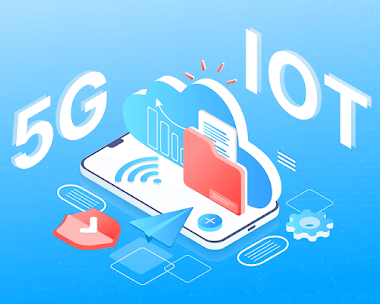The Revolutionary Convergence: Understanding 5G and IoT Technologies

The dawn of the fifth generation of wireless technology is not merely an upgrade in mobile speed; it represents a fundamental enabler for a new technological paradigm. This evolution is most pronounced in its synergy with the Internet of Things (IoT), where a massive web of interconnected devices requires robust, reliable, and instantaneous communication. The fusion of 5G IoT is set to redefine connectivity, moving beyond human-centric communication to a world of machine-to-machine interaction on an unprecedented scale. This powerful combination is fueling immense economic potential, with projections indicating the market will achieve a substantial valuation of USD 13.6 billion by 2035, propelled by a consistent compound annual growth rate of 7.06% over the preceding decade. The implications of this growth are vast, promising to reshape industries, create new services, and drive a new wave of digital transformation across the globe, from smart homes to intelligent factories.
At its core, 5G technology brings three game-changing capabilities to the IoT ecosystem: enhanced mobile broadband (eMBB), ultra-reliable low-latency communications (URLLC), and massive machine-type communications (mMTC). eMBB provides the high-speed data transfer necessary for applications like high-definition video surveillance and augmented reality. URLLC, with its near-instantaneous response times, is critical for mission-critical applications such as autonomous vehicles, remote surgery, and industrial automation, where even a millisecond of delay can have significant consequences. Finally, mMTC is designed to support a huge density of low-power, low-data devices, making it ideal for large-scale deployments like smart city sensors, agricultural monitors, and utility meters. This trifecta of capabilities ensures that 5G can cater to the diverse and demanding requirements of the entire IoT spectrum, from a simple sensor to a complex robotic system.
The transition from previous generations like 4G LTE to 5G is pivotal for realizing the full potential of IoT. While 4G enabled the initial wave of consumer IoT devices, it often struggled with network congestion, higher latency, and limitations on the number of concurrently connected devices. 5G addresses these bottlenecks directly. Its architecture allows for network slicing, which enables operators to create virtual, dedicated networks optimized for specific IoT use cases. For example, a slice can be configured for the high-bandwidth needs of a smart factory, while another can be tailored for the low-power, wide-area requirements of environmental sensors. This level of customization and efficiency was not possible with older technologies, unlocking a new frontier of specialized and reliable IoT services that can be deployed at scale without compromising performance or security.
Ultimately, the convergence of 5G and IoT is the catalyst for a truly intelligent and connected world. It moves the Internet of Things from a collection of siloed, often-limited devices to a cohesive and interactive ecosystem. This integration will power the next generation of innovation, enabling real-time data analytics, AI-driven decision-making at the edge, and the creation of services that are more responsive, efficient, and personalized. From optimizing energy grids and streamlining supply chains to revolutionizing healthcare and entertainment, the impact of 5G-powered IoT will be felt in every aspect of modern life. The journey towards this hyper-connected future is just beginning, but its foundation is firmly being laid by the powerful partnership between 5G and the Internet of Things, promising a decade of transformative growth and opportunity.
Explore More Like This in Our Regional Reports:
- Art
- Causes
- Crafts
- Dance
- Drinks
- Film
- Fitness
- Food
- Jogos
- Gardening
- Health
- Início
- Literature
- Music
- Networking
- Outro
- Party
- Religion
- Shopping
- Sports
- Theater
- Wellness



